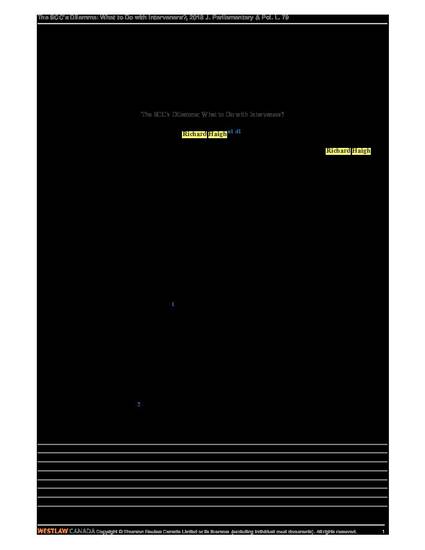
Richard Haigh: 0000-0002-2828-8566
At a conference in 2016, Osgoode Hall Law School Dean Lorne Sossin made the following offhand comment: “I think it is possible to tell the most important Supreme Court of Canada cases by the number of interveners that were involved.” I assume what he meant--and granted, it was somewhat tongue in cheek--that the more interveners there are in a case, the more important the case.
The comment intrigued me. Is it true? It is such a simple proposition. Intuitively, it seems right: more parties would wish to involve themselves in those cases that have larger impacts, or that represent more important state matters. But it seemed such a throwaway line at the time ...
Answering this question became part of a larger, ongoing project to assess the importance of interveners at the Court, from the very first intervention in the 19th century to the present day. It attempts to assess the actual role interveners may play by posing a series of questions. What effect, if any, do interveners have on the judges' decisions? How can these effects be measured? Quantitatively? Qualitatively? Since there may be dozens of interveners in any given case, it means, over the years, more interveners have appeared than *80 parties. And yet their role is not well understood; interveners operate largely in the shadows of a case, known mainly to a few lawyers and scholars who follow the Supreme Court's jurisprudence. Surprisingly little analysis on them has been done or written.
Available at: http://works.bepress.com/richard_haigh/71/
